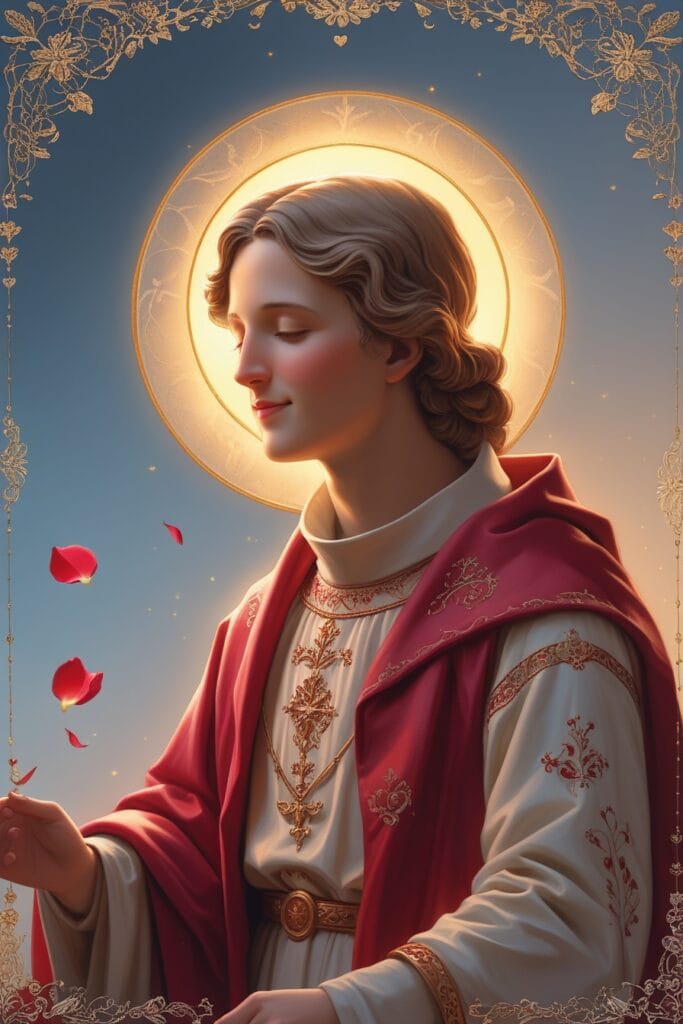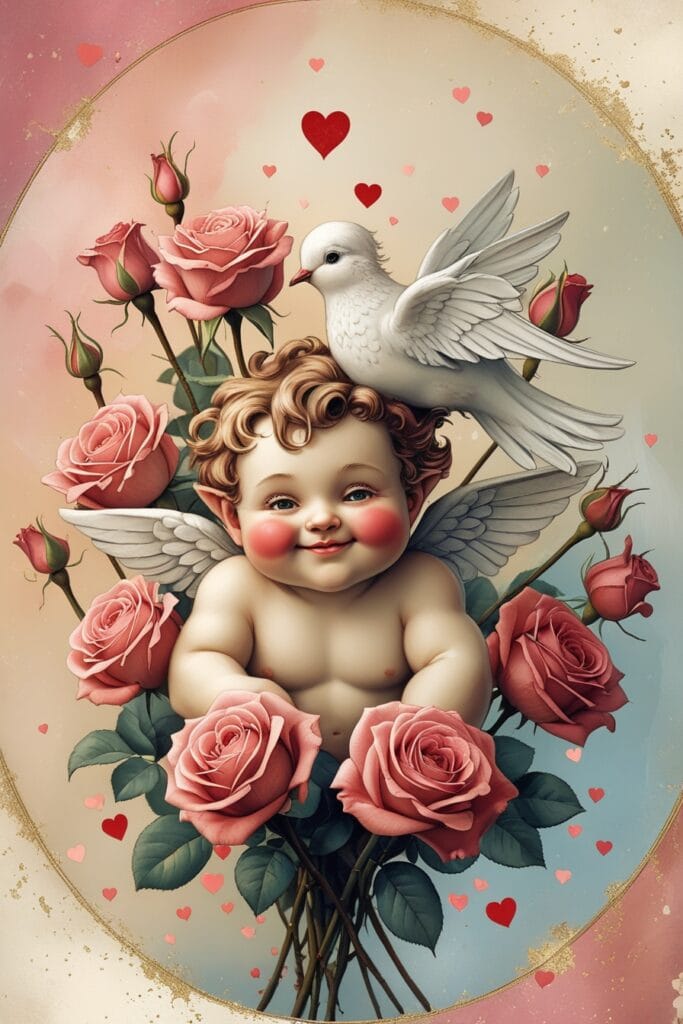Valentine’s Day is a time to express love, friendship, and emotional attachment towards each other. In essence, however, on this day, gifts of roses, chocolates, and cards notwithstanding, there is something significant and deeper than that. Behind these celebrations sits a man who, though the story of his life and good deeds is mostly filled with uncertainty, has been embraced as the symbol of love worldwide—Saint Valentine. His saga which is interlaced with the themes of love, sacrifice, and fidelity, is the pantheon of time and still stirs a feeling of wonder in multitudes.

Who Was Saint Valentine?
The identity of Saint Valentine is not really understood. It is the case that numerous legends and anecdotes abound about his life, but they always mix up the truth and the myth. Here’s the most popular version of what people say he was: Saint Valentine was a Christian priest in the Roman Empire at the time of the rule of Emperor Claudius II in the 3rd century. This was a time when the ruler of the empire had issued an edict that prohibited marriage for teens, arguing that the single men made the best soldiers. Valentine, however, was not scared of the emperor and he still went on marrying young lovers in secret, despite the orders of the emperor. He was put in prison by the authorities for this when they found out what he had been doing. During his time in jail, Valentine is supposed to have been insightful to the jailer’s daughter who was blind. And, in some accounts, he allegedly restored her vision by the power of prayer, an extraordinary act that boostered their union even more. Right before his death, he is said to have written her a note, in which he signed “From Your Valentine,” a motto that lives on nowadays. Valentine received a death sentence by beheading on February 14, probably in 269 AD. Latter, he was canonized the Catholic Church and became the patron saint of lovers, beekeepers, and epileptics. The day of his execution, February 14, eventually became a celebration of love and affection.
The Evolution of Valentine’s Day
The association between Saint Valentine and romantic love did not happen out of the blue. The conversion from a saint martyr’s feast day to a day of love was gradual, composed of a mix of historical episodes, and cultural traditions:
Festival of Lupercalia: The roots of Valentine’s Day can also be found to be in the ancient Romans’ Lupercalia festival, held in the middle of February. This fertility treat included sacrifices, feasting, and made matches. Even the connection between Lupercalia and Valentine’s Day is not clear, some assert that the Christian church, for the sake of vision, decided to celebrate St. Valentine’s day at the time of their pagan period as a diversion.
Geoffrey Chaucer’s “Parliament of Fowls”: In the 14th century, the English poet Geoffrey Chaucer embraced the notion of a Valentine’s Day filled with love and sent it to the masses through his work “Parliament of Fowls.” In his work, he talks about the birds who met on “St. Valentine’s Day” to select their mates. This kind of poetic figure concentrated the time and love in middle ages England and this day.
Valentine’s Day Cards: Starting from the 15th, people got the habit of writing each other love notes and poems, which ultimately led to the formation of the Valentine’s Day love cards. This tradition embraced the 18th and 19th centuries to an even wider extent, the printed cards were popularly available, the mass production of cards became a thing. Nowadays, Valentine’s Day is one of the most popular card-exchanging holidays all over the world with millions of cards exchanged annually.

The Symbolism of Valentine’s Day
Hearts: There is no symbol that is more universally known than that of love. It is thought that the heart shape was the early phonetic symbol of human emotion, and later, its association with romantic love developed.
Cupid: Cupid is in classical mythology the (mischievous) god of love who often (he is) imagined as a mischievous, winged boy crying to those he loves to join him. Cupid has become the heart and soul of Valentine’s Day traditions.
Roses: The representation of the red roses as love and desire is a long long gone tradition. According to Greek mythology, roses were born in the era when Aphrodite created them after the feud she had during the festival of love.
Doves: Both in the contemporary and old ways, Doves stand as the symbols of peace, love, and fidelity, but typically, they are synonyms of the purity and trust that people share in love relationships.
Modern Celebrations of Valentine’s Day
Valentine’s Day is an international day of love in modern times centred on individuals who develop close relationships across the barriers of nationality, age, and gender. The day has been incredibly commercialized with the sale of cards, chocolates, flowers, and gifts breaking all records. The food and wine businesses, flower traders, and goldsmiths take advantage of the day, and there are so many people who give each other gifts to tell them that they like them.
While romantic love is a central theme, the holiday has also become a celebration of all kinds of love. To strengthen their bond, schools encourage kids to exchange Valentine’s Day cards with their classmates and people often show their appreciation by sending warm messages or small gifts to their close relatives and friends. As the times changed, Valentine’s Day was no longer solely aboutthe people who are the main characters, but got a new look with the rise of the internet, and new ways to celebrate have been introduced. People, for instance, post love-related messages, photos, and shout-outs to those they love on social media. Even the boys still enjoy Valentine’s Day, which many children normally also include in school celebrations. One girl even stated, “Valentine’s Day should a be a day filled with loving memories at school which means I should feel loved. The day is a good way to remember that we can work together to recover from any problem we might have had. I also take the year like the changing of the weather. First, it starts to snow then rain follows and when they pass, it gets foggy and cold, then spring comes and flowers and leaves are here then summer and also a lot of all those stuff again without snow and rain.”
Controversies Surrounding Valentine’s Day
Although Valentine’s Day is a widely celebrated holiday, it stirs up a dispute among critics. One of the most common arguments for dumping the celebration includes the fact that marketing deepened the emphasis on purchases or practical issues, thus redefining love as a mere transaction. Others, however, regard it as a heavy load that athlete others, especially those who are single, to feel worthless or lonely. A day without a partner or a former relationship can be a crucial time in life. For some, the day may also be a day when they remember their losses or the time they suffered for different reasons. In addition, the opponents clarify that the traditional emphasis on romantic tales often distracts people from other kinds of cups of love such as self-love, familial love, and platonic friendships. All these, however, must be given an equal place and be respected.
The spirit of Saint Valentine spreading goodness all around seems remarkable and will continue to be a feat that is achieved in different ways like the writing of complimentary passnotes, giving tokens of love, or simply having fun with those we heart. We may have a spread of several versions or misguided fables but the main point remains the same his stand for kindness, sacrifice, and While February 14 may just be a part of the annual cycle for some, for others, it serves to remind the time they must cherish their loved ones and show love and peace, which are the very essence of Saint Valentine’s Day being the day or not. It’s just everywhere. Even the birds sing it, so why make Valentine’s Day any different? Of course, the Spaniards do not speak in the bucolic style I have adopted here, that is just a somewhat affected way to make violent language seem less daunting.

For some 14th February is observed just as another calendar day, but for others it’s recalling the cherished memories we hold, to spread kindness and love, not just for this day but for all the days in life. It doesn’t matter whether you are exchanging notes, cards, or sending messages to all your loved ones who bring joy in your life; Saint Valentines message is prevalent as it was centuries ago.

